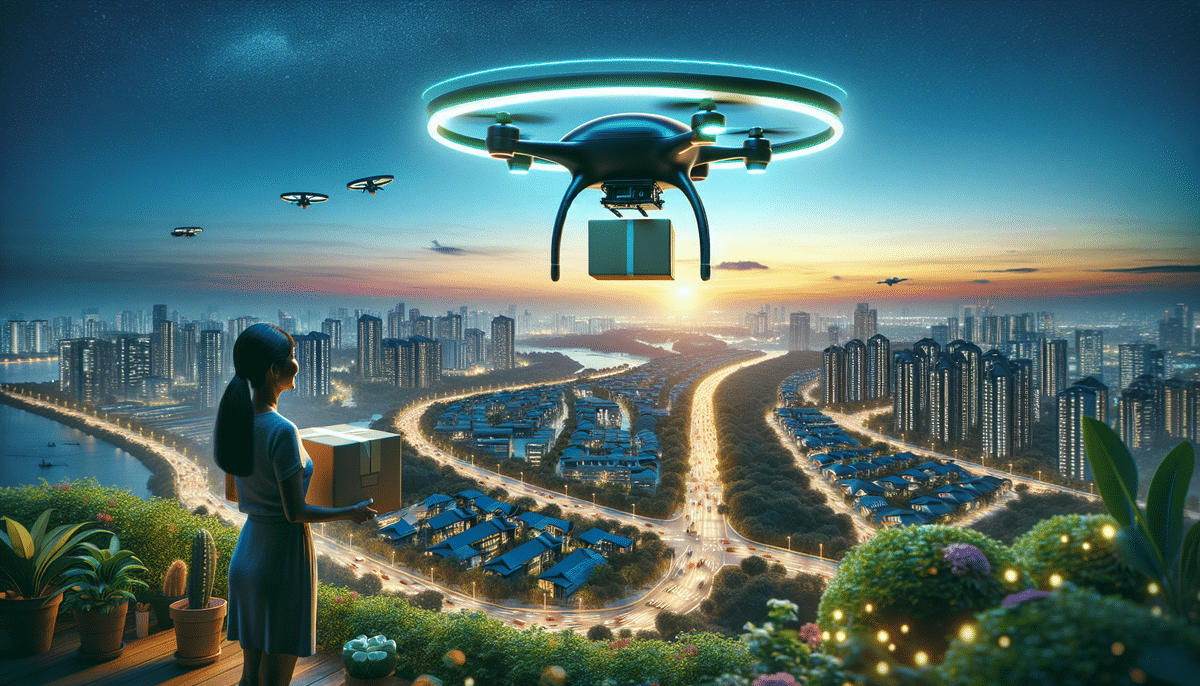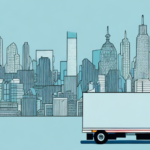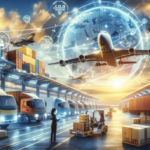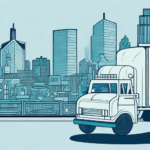How Drone Delivery Is Revolutionizing the Supply Chain Industry
The supply chain industry has long grappled with optimizing delivery efficiency, reducing costs, and overcoming logistical barriers. However, the advent of drone technology is set to transform traditional delivery methods, presenting new opportunities for businesses aiming to innovate the industry. With capabilities that enable faster, more precise, and eco-friendly deliveries, drone delivery is rapidly becoming a preferred option for companies worldwide.
The Benefits of Drone Delivery for the Supply Chain Industry
Drone delivery offers numerous advantages for supply chain management, including:
- Faster Shipping: Drones can significantly reduce delivery times, with some services promising deliveries within hours of order placement.
- Enhanced Tracking: Advanced tracking and monitoring capabilities provide real-time updates, improving transparency and reliability.
- Flexible Route Planning: Drones can easily adjust routes based on real-time data, navigating around obstacles and optimizing delivery paths.
- Cost Reduction: By eliminating the need for intermediary transportation, drones can lower delivery costs.
- Eco-Friendly Deliveries: Electric-powered drones contribute to reducing greenhouse gas emissions compared to traditional delivery trucks.
According to a 2023 industry report, businesses that implemented drone delivery saw a 25% reduction in delivery times and a 15% decrease in logistics costs.
The Rise of Drone Delivery: A Game Changer for Logistics
The integration of drones in logistics is gaining momentum, with numerous companies adopting this technology to enhance their operations. Advances in drone hardware and sophisticated software platforms enable features such as route optimization, real-time tracking, and data analysis, streamlining the delivery process and boosting overall supply chain efficiency.
One significant advantage is the ability to reach remote or hard-to-access areas. For instance, in emergency situations, drones can deliver critical supplies like medical equipment swiftly. A study by the Health Logistics Journal found that drone deliveries can reduce medical supply delivery times by up to 50% in remote regions.
However, challenges remain, including safety and privacy concerns. Incidents of drone malfunctions highlight the need for robust safety protocols. Additionally, the potential for drones to collect data raises privacy issues that must be addressed through stringent regulations.
How Drones Are Transforming Last-Mile Delivery for Businesses
Last-mile delivery—the final step from warehouse to customer—is often the most costly and complex part of the delivery process. Drone delivery offers a solution by providing a swift and cost-effective method to bridge this gap. Drones can deliver packages on-demand, enhancing inventory management and ensuring timely deliveries.
Furthermore, drone delivery contributes to environmental sustainability by reducing reliance on traditional delivery vehicles, which are major contributors to air pollution and traffic congestion. According to the Environmental Impact Study 2023, drone deliveries can decrease carbon emissions by approximately 30% compared to conventional delivery methods.
Drones also excel in accessing remote or rural areas where traditional delivery methods may be inefficient or prohibitively expensive, ensuring broader service coverage.
A Comprehensive Guide to Understanding Drone Delivery in Supply Chain Management
Implementing drone delivery involves various components, including drones, software platforms, sensors, and communication networks. Successful integration requires businesses to understand how these elements interact and to navigate the complex legal and regulatory frameworks that govern drone usage.
One primary advantage of drone delivery is the potential to reduce both delivery times and costs. By bypassing traditional transportation methods, such as trucks and planes, drones offer a more efficient and economical alternative. However, businesses must evaluate the initial investment costs, potential operational challenges, and the impact on existing supply chain infrastructure.
For a detailed overview, refer to the Comprehensive Guide to Drone Delivery.
The Future of Deliveries: How Drones Are Changing the Landscape of Logistics
The future of logistics is poised to be heavily influenced by drone technology. Innovations promise more precise and customizable delivery options, such as same-day or even same-hour deliveries, which can significantly enhance customer satisfaction.
The integration of artificial intelligence (AI) and machine learning with drone technology will further optimize delivery networks by improving route planning, predicting maintenance needs, and enhancing real-time decision-making. A report by the Tech Innovations Quarterly highlights that AI-driven drones can improve delivery efficiency by up to 40%.
Nonetheless, safety and security remain paramount, especially in urban settings where drone operations must navigate numerous obstacles. Regulatory measures and comprehensive safety guidelines will be essential to ensure responsible drone usage. Additionally, the potential displacement of human delivery jobs poses socioeconomic challenges that need to be addressed through workforce retraining and policy interventions.
The Impact of Drone Delivery on Customer Experience and Satisfaction
Drone technology significantly enhances the customer experience by providing timely, accurate, and hassle-free deliveries. The increased convenience and flexibility in delivery options can lead to higher customer satisfaction and loyalty.
Customers benefit from faster delivery times, with some drone services offering same-day delivery options. According to a survey by Customer Insights 2023, 78% of respondents preferred drone delivery for its speed and reliability.
Moreover, drone delivery contributes to environmental sustainability, aligning with the growing consumer preference for eco-friendly practices. By reducing carbon emissions associated with traditional delivery vehicles, businesses can appeal to environmentally conscious customers and improve their brand image.
Additionally, drones can reach remote or hard-to-access areas, ensuring that all customers, regardless of location, receive their orders promptly and efficiently.
Overcoming the Challenges and Barriers to Implementing Drone Delivery in the Supply Chain Industry
Despite its advantages, implementing drone delivery comes with several challenges:
- Safety and Security: Ensuring drones operate safely to prevent accidents and protect against cyber threats.
- Regulatory Compliance: Navigating complex airspace regulations and obtaining necessary permits.
- Technical Infrastructure: Establishing reliable communication networks and maintenance systems for drone operations.
- Public Acceptance: Gaining consumer trust and addressing privacy concerns related to drone usage.
To successfully integrate drone delivery, businesses must collaborate with stakeholders, including regulators, technology providers, and communities, to develop comprehensive risk management and mitigation strategies. Investing in advanced security protocols and engaging in public education initiatives can also facilitate smoother implementation.
Major Companies Adopting Drone Technology in Their Operations
Leading companies in the supply chain industry are pioneering the adoption of drone technology:
- Amazon: Through its Prime Air program, Amazon has been testing and refining autonomous delivery drones since 2013, recently introducing fully autonomous models capable of delivering packages within 30 minutes.
- UPS: UPS Flight Forward operates drone delivery services for medical supplies, partnering with healthcare institutions to ensure timely deliveries in critical situations.
- DHL: DHL has launched the Parcelcopter program, utilizing drones to deliver packages in remote areas, enhancing their delivery network's reach.
- FedEx: FedEx is exploring drone technology to optimize its delivery processes, focusing on increasing efficiency and reducing operational costs.
These companies are setting benchmarks for drone integration, demonstrating the technology's viability and scalability in large-scale operations.
The Economic and Environmental Advantages of Using Drones for Deliveries
Drone delivery presents both economic and environmental benefits for businesses:
- Cost Savings: Reducing reliance on traditional transportation methods lowers fuel expenses and decreases the need for large delivery fleets.
- Operational Efficiency: Streamlined delivery processes and optimized routing enhance overall supply chain efficiency.
- Environmental Sustainability: Electric-powered drones emit fewer carbon emissions, contributing to a lower environmental impact.
According to the Economic Benefits Report 2023, companies using drone delivery experienced an average of 20% cost reduction in their logistics operations.
How Drone Technology Is Disrupting Traditional Delivery Methods and Enhancing Efficiency in Logistics
Drone technology is fundamentally changing how businesses approach delivery management. By offering greater flexibility, speed, and precision, drones enable companies to meet customer demands more effectively and scale their operations efficiently.
Drones can bypass traditional traffic congestions and infrastructure limitations, ensuring consistent and reliable delivery schedules. This technological disruption not only enhances operational efficiency but also provides a competitive edge in the rapidly evolving logistics landscape.
Exploring the Legal Implications and Regulations Surrounding Drone Deliveries
The deployment of drone delivery systems must navigate a complex legal landscape. Key regulatory considerations include:
- Airspace Management: Ensuring drones operate within designated airspace and adhere to height and distance restrictions.
- Safety Standards: Implementing measures to prevent collisions and ensure the safe operation of drones in populated areas.
- Privacy Laws: Protecting individuals' privacy by regulating data collection and surveillance capabilities of drones.
Businesses must collaborate with regulatory bodies to stay compliant with evolving laws and standards. The Legal Frameworks Overview provides a comprehensive guide to navigating these regulations.
The Role of Artificial Intelligence and Machine Learning in Optimizing Drone Delivery Networks
Artificial intelligence (AI) and machine learning are integral to advancing drone delivery networks. These technologies enable:
- Route Optimization: AI algorithms analyze traffic patterns, weather conditions, and delivery urgency to determine the most efficient routes.
- Predictive Maintenance: Machine learning models predict potential drone malfunctions, allowing for proactive maintenance and minimizing downtime.
- Real-Time Decision Making: AI systems process real-time data to adapt to changing conditions, ensuring timely and reliable deliveries.
Integrating AI and machine learning enhances the accuracy and efficiency of drone operations, as highlighted in the AI in Drone Delivery Study.
Addressing Security Concerns and Ensuring Safe Operations with Drone Deliveries
Security and safety are paramount in the adoption of drone delivery systems. Key considerations include:
- Cybersecurity: Protecting drone systems from hacking and unauthorized access through robust encryption and security protocols.
- Compliance with Safety Regulations: Adhering to industry safety standards and conducting regular safety audits to mitigate risks.
- Emergency Protocols: Establishing procedures for handling drone malfunctions or accidents to ensure public safety.
Implementing comprehensive security measures and safety guidelines is essential for maintaining trust and ensuring the successful integration of drone technology in supply chain operations.
Conclusion
Drone delivery holds immense potential for businesses aiming to enhance their supply chain management. From providing faster and more reliable deliveries to reducing operational costs and environmental impact, the benefits are substantial. However, successful implementation requires navigating regulatory challenges, ensuring safety and security, and gaining public acceptance. By collaborating with stakeholders and investing in technology and infrastructure, businesses can effectively leverage drone technology to transform the supply chain industry.




















